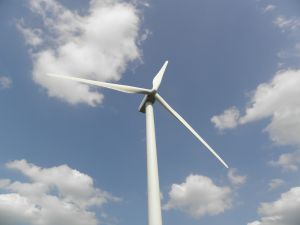By NOEL MURPHY
A COURT brawl over a proposed giant King Island wind farm to power Geelong has failed to slow a Hydro Tasmania feasibility study into the project.
The Federal Court’s Justice Duncan Kerr has ordered objectors to the wind farm and Hydro Tasmania to determine community support for the facility after the No TasWind Farm Group called for an injunction on the project.
A date has yet to be set for a return to court but Hydro Tasmania said yesterday the $2 billion proposal – a gigantic 200-turbine project to generate 600 megawatts of green power for Geelong via an underwater cable – was proceeding unimpeded.
The TasWind project has sparked anxiety among conservationists about its potential impact on the orange-bellied parrot, which uses the island as a breeding ground.
Independent federal MP Nick Xenophon has also raised concerns about taxpayer costs and additional coal-generated power needed to back up the wind farm.
The facility would harness prevailing Roaring Forties winds to generate enough electricity for up 250,000 houses. The project would create 500 jobs during a two-year construction phase.
Hydro Tasmania spokesperon Sam Meyer said company declined to comment on the court proceedings.
“But there has been no impact on the feasibility study whatsoever. There is no injunction so we’re continuing work.”
The No TasWind lobby has argued Hydro Tasmania lacks sufficient community support for the wind farm, which would be the largest in the Southern Hemisphere.
Hydro Tasmania stated earlier this year it would shelve the project if it was unable to secure the backing of 60 per cent of the Bass Strait island community. The project garnered 59 per cent support, prompting the No TasWind challenge.
Work on TasWind could begin in 2017, with the plant operational by 2019.
Hydro Tasmania has been conducting public sessions for King Island residents to hear “what a real wind farm sounds like”.
Acoustic engineering experts presented recordings of turbine noise with calibrated noise levels in different scenarios – close to and far away from turbines, inside and outside homes and under varying weather conditions.







